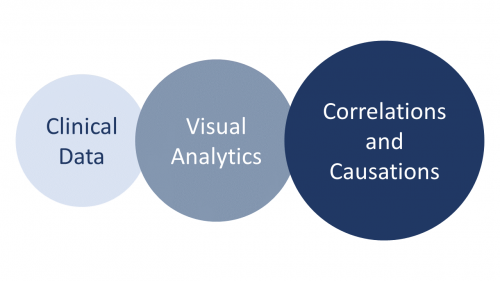Determination of clinically relevant, quantitative biomarkers

The goal of this research area is the development of methods for a guided assistance in the detection of biomarkers based on medical clinical routine image and patient data.
The enormous amount of available clinical routine data allows for statistical predictions about tissue characteristics, diagnoses and disease progressions based on statistics and machine learning algorithms. The analysis of automatically extracted quantitative image features from a large amount of image data is known as “Radiomics”. Heterogenous quality of image data acquisition and often necessary measures for image data quality enhancement lead to uncertainties in feature extraction. Goals of this research area are the quantification and communication of these uncertainties as well as the guidance of the analyses processes, particularly with regard to correlation testing between features and clinical endpoints under uncertainty.
Next to image data, patient data acquired during clinical routine, such as personal data (age, gender, BMI, …), current treatment data (medication, blood pressure, laboratory values, …), patient history (previous diagnoses and therapies) and life style data (physical activity, diet, smoking, alcohol consumption, level of education,…) are investigated in this research area. Evaluation of the associations between clinical endpoints, features extracted from the image data, and patient data enables hypotheses verification and generation with regard to disease specific biomarkers. For this part of the research, the MedDigit team will develop a Visual Analytics framework in cooperation with theVisualization Group [MOU3] (Helwig Hauser) at the University of Bergen, Norway. This framework will support analysts with the identification of at present unknown correlations between diseases, risk factors and structural and functional brain features. The framework will apply data mining and machine learning techniques as well as statistical methods to support medical researchers with the extraction of phenotypes and the identification of causal relations between patient features.





